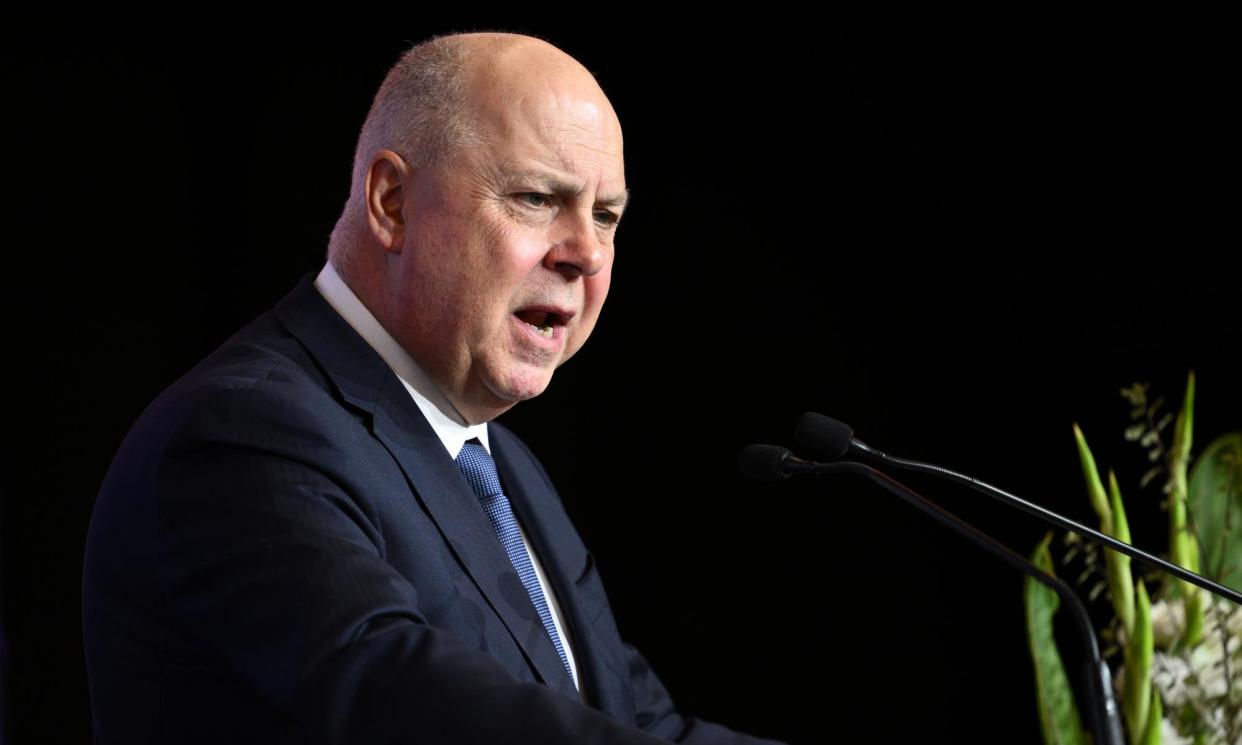Plan to cap international students ‘fundamentally destructive’ for state’s finances, Victorian treasurer says

Victoria’s treasurer says the federal government’s plan to cap international university students is a “fundamentally destructive decision” which will have an “adverse effect” on the state’s finances.
Tim Pallas’s comments highlight the tough fight Labor faces to pass its proposal through the federal parliament, with opposition from the Greens and its own state ranks.
The education minister, Jason Clare, on Tuesday announced a plan to limit new international university enrolments to 270,000 next year, with some universities able to increase international student numbers while others will have to cut back.
Related: Albanese government announces plan to cap international student enrolments at 270,000
The Greens leader, Adam Bandt, said the government had “dressed up” a migration policy as an education policy and did not have a plan to support universities which had become reliant on money from international students, because of what he said was a lack of government funding.
“This will have flow-on effects … to non-international students, to local students as well, because you’re pulling out a revenue stream from universities without replacing it with something else,” he said.
Bandt said the cap was proposed “all because [Peter] Dutton has started a debate about migration and this is an easy shot”.
Pallas urged his federal Labor counterparts to reconsider the cap.
“Not since Scott Morrison basically told international students to go home could we have come up with a more fundamentally destructive decision,” he said.
“To essentially tell international students we see them as a principle problem with regard to migration, it’s just bad policy.
“There’s no need for this. There is absolutely no need for this.”
However, the government may find the numbers it needs to pass the legislation in the Senate with the Coalition. The opposition has not ruled out supporting the bill, although the shadow treasurer, Angus Taylor, said he wanted to see “how [the cap] tallies up to the overall targets for immigration”.
“At the end of the day, what matters here is that we get the balance right in our immigration policy, and that our housing supply and other services that are critical to this country are able to keep up with that growth in immigration,” he said.
Migration had been forecast even higher under the Morrison government in its final budget papers. The Coalition has announced a policy to cut migration under a future government, but is yet to provide the detail.
Initial analysis by industry stakeholders found the changes proposed by Clare would mean almost 35,000 fewer places for higher education, based on 2023 figures, and almost 97,000 fewer places for vocational education training institutions.
While individual institutions were still doing the sums on what the cut would mean for them, both in terms of international student numbers and financial loss, those which could benefit were quick to welcome the proposed changes.
The La Trobe University vice-chancellor, Prof Theo Farrell, said his institution was hit hard by ministerial directive 107 – an instrument put in place in 2023 which gave priority to students applying for low-risk institutions – and he welcomed the plan.
Farrell said La Trobe had been “disproportionately impacted by the student visa processing arrangements stemming” from ministerial directive 107, “which have undermined our mission to raise participation in higher education, including in regional Victorian communities”.
The University of Sydney was not quite as open in welcoming the changes. A spokesperson said the institution would “now carefully work through the detail to assess the likely impact on our core operations of education and research, and our community.”
The University of Melbourne vice-chancellor, Prof Duncan Maskell, took a similar view, saying more transparency was needed around how the government came to its numbers.
“One of the first things we will have to do is seek clarity from the government about the complex methodology that was used to inform their figures,” he said.
“This methodology was never discussed with us and there has been no consultation process.”
Monash University also questioned the methodology.
Related: Labor’s international student cap an ‘unprecedented’ overreach and ‘recipe for chaos’, experts warn
“Monash has today received its indicative international commencing student limit. We are currently working to understand the rationale supporting the figure provided and the subsequent full implications of the Government’s announcement,” the university said in a statement.
The Universities Australia chair, Prof David Lloyd, said the idea the cap would be a “boost” to regional universities was “an interesting one, because what we’re talking about here is a proposal to take enrolments and caps back to 2019”.
“And somehow that’s seen as a progressive thing,” he said.
“We’re dealing with the second largest export industry in the country, and surely there’s a recognition that the growth and exports is something that Australia wants. It supports research and innovation. It supports the economy. We’ve got the Business Council of Australia, we’ve got Tourism Australia, we’ve got all of these other areas outside of the university sector saying that this is a bad idea and it’s still being progressed.”
The acting prime minister, Richard Marles, said the caps were necessary to make migration “more sustainable”.
“You cannot manage immigration without managing student visas and so that’s why we’ve put caps in place.”


